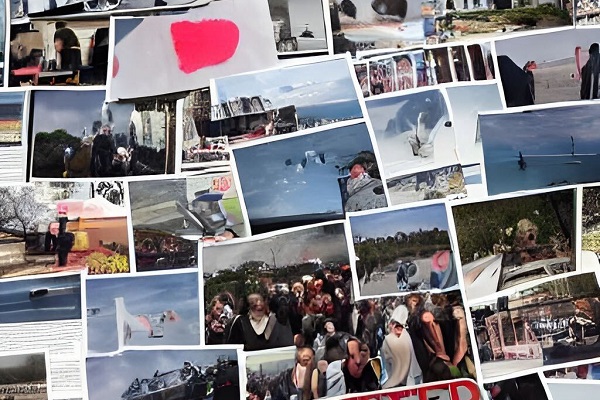Getty Images Removes and Bans AI-Generated Art
 Popular news and stock media service Getty Images has officially banned any AI-generated images from its servers and has begun deleting any it hosts already on its servers. That would include the illustration for this piece seen above. AI text-to-image app Wonder produced that collage from the prompt “newspaper stock images in photographic style.”
Popular news and stock media service Getty Images has officially banned any AI-generated images from its servers and has begun deleting any it hosts already on its servers. That would include the illustration for this piece seen above. AI text-to-image app Wonder produced that collage from the prompt “newspaper stock images in photographic style.”
AI Images Out
Getty Images explained to its customers that legal uncertainy about the AI-generated images prompted the decision. Text-to-image engines are trained on a wide variety of visuals, including copyrighted material scraped from the web. That makes their output fine for non-commercial purposes under the fair-use doctrine but could theoretically lead to legal wrangling as it might infringe on existing copyright should someone try to sell an image they prompted Midjourney, DALL-E 2, or Stable Diffusion to create.
“Effective immediately, Getty Images will cease to accept all submissions created using Al generative models (e.g., Stable Diffusion, Dall-E 2, MidJourney, etc.) and prior submissions utilizing such models will be removed,” Getty explained in a letter to users. “There are open questions with respect to the copyright of outputs from these models and there are unaddressed rights issues with respect to the underlying imagery and metadata used to train these models.”
Getty Images isn’t the first online art repository to forbid AI contributions, though it is much larger than Newgrounds, PurplePort, or others who reached the same conclusion. Fellow stock image giant Shutterstock appears to be taking a more low-key approach in removing at least some AI-generated images from its platform, according to a Vice report.
Getty did make sure to note that digital design and editing tools like Photoshop are still fine to use. The slightly blurry line defining this category of software as allowable seems to be the human element in photographing, drawing, or programming the submission. The gap between coming up with a prompt that a text-to-image AI can transform into a visual is too far. The effort to devise a phrase that would produce a useful illustration like the one above would not cut it. Legal rules answering philosophical questions about how to define art and artists may be necessary, but they’re unlikely to lay the issues to rest.
Follow @voicebotaiFollow @erichschwartz
OpenAI Starts Letting DALL-E 2 Users Edit Faces on Synthetic Images
Lightricks Adds AI Text-to-Image Generator to Photo Editing Mobile Apps








